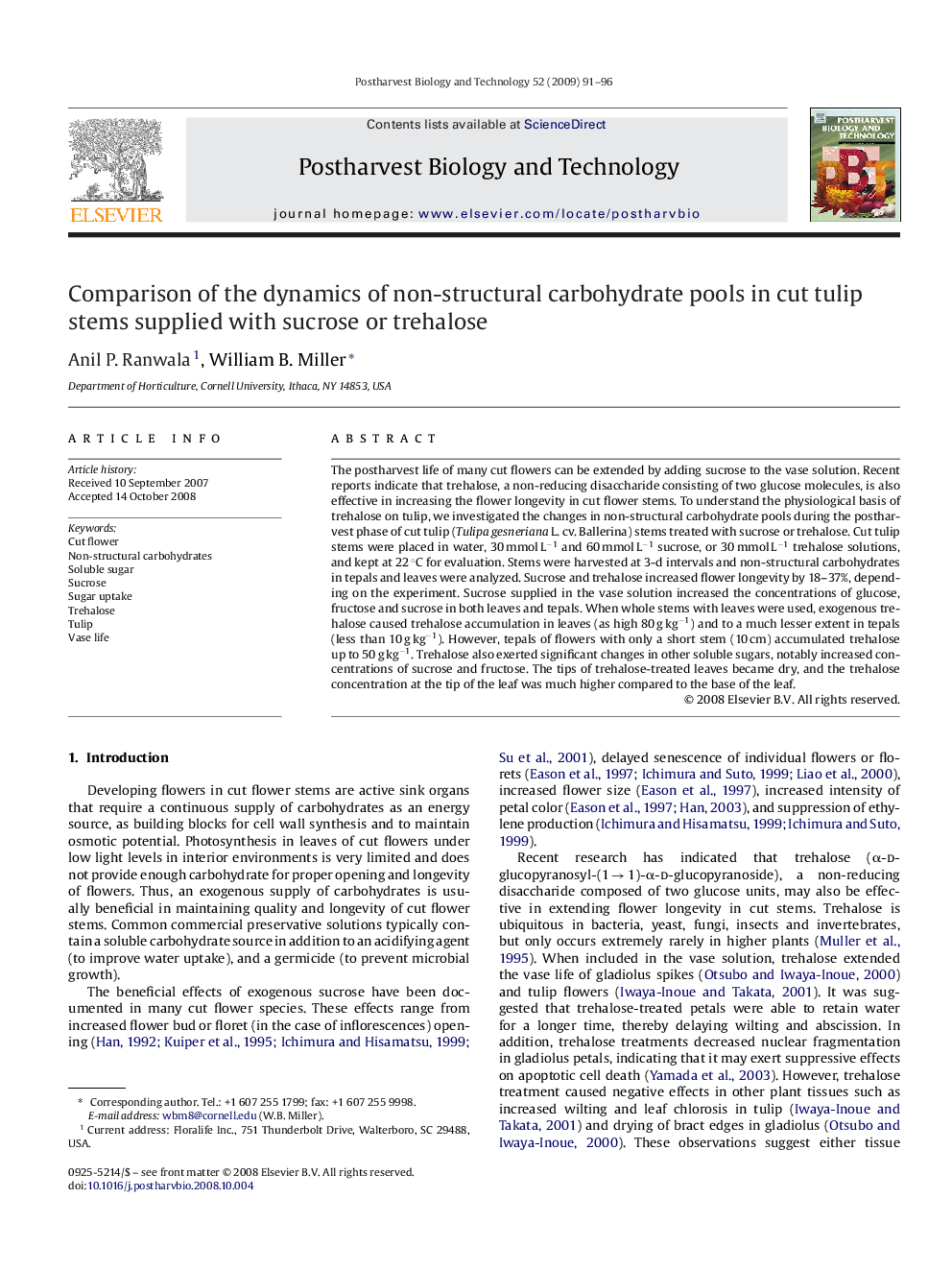| کد مقاله | کد نشریه | سال انتشار | مقاله انگلیسی | نسخه تمام متن |
|---|---|---|---|---|
| 4519191 | 1322822 | 2009 | 6 صفحه PDF | دانلود رایگان |

The postharvest life of many cut flowers can be extended by adding sucrose to the vase solution. Recent reports indicate that trehalose, a non-reducing disaccharide consisting of two glucose molecules, is also effective in increasing the flower longevity in cut flower stems. To understand the physiological basis of trehalose on tulip, we investigated the changes in non-structural carbohydrate pools during the postharvest phase of cut tulip (Tulipa gesneriana L. cv. Ballerina) stems treated with sucrose or trehalose. Cut tulip stems were placed in water, 30 mmol L−1 and 60 mmol L−1 sucrose, or 30 mmol L−1 trehalose solutions, and kept at 22 °C for evaluation. Stems were harvested at 3-d intervals and non-structural carbohydrates in tepals and leaves were analyzed. Sucrose and trehalose increased flower longevity by 18–37%, depending on the experiment. Sucrose supplied in the vase solution increased the concentrations of glucose, fructose and sucrose in both leaves and tepals. When whole stems with leaves were used, exogenous trehalose caused trehalose accumulation in leaves (as high 80 g kg−1) and to a much lesser extent in tepals (less than 10 g kg−1). However, tepals of flowers with only a short stem (10 cm) accumulated trehalose up to 50 g kg−1. Trehalose also exerted significant changes in other soluble sugars, notably increased concentrations of sucrose and fructose. The tips of trehalose-treated leaves became dry, and the trehalose concentration at the tip of the leaf was much higher compared to the base of the leaf.
Journal: Postharvest Biology and Technology - Volume 52, Issue 1, April 2009, Pages 91–96